Hisense U8G Reviewed at $849.00 (55")
Product Name: Hisense U8G
Product Description: 2021 4K ULED TV
-
Design - 9/10
9/10
-
Video Quality - 9.2/10
9.2/10
-
Ports & Connectivity - 9/10
9/10
-
OS, Apps and Features - 9.2/10
9.2/10
-
Price / Quality - 9/10
9/10
Summary
Reviewed at $849.00 (55″)
Pros
- Great brightness in both SDR and HDR
- Very good contrast
- HDR10+ and Dolby Vision support
- Low input lag
Cons
- Visible blooming
- Slow dimming algorithm
- Mediocre motion performance
- Only two HDMI 2.1 ports
Cheapest Places to Buy :
*We are a reader-supported website. When you buy through links on our site, we may earn a small affiliate commission at no extra cost to you. Home Media Entertainment does not accept money for reviews.*
We continue our venture into the new 2021 Hisense release lineup and today we will be looking another of their LED LCD TVs for this year. Hisense has impressed us as they have managed to include exceptional specs into their units and slap them with a price tag that is hard to find in any other competing brand. This was the case with both the Hisense U6G and U7G that we reviewed recently. So in our Hisense U8G review today we will see if this higher tier model can keep the pace as its little brothers did.
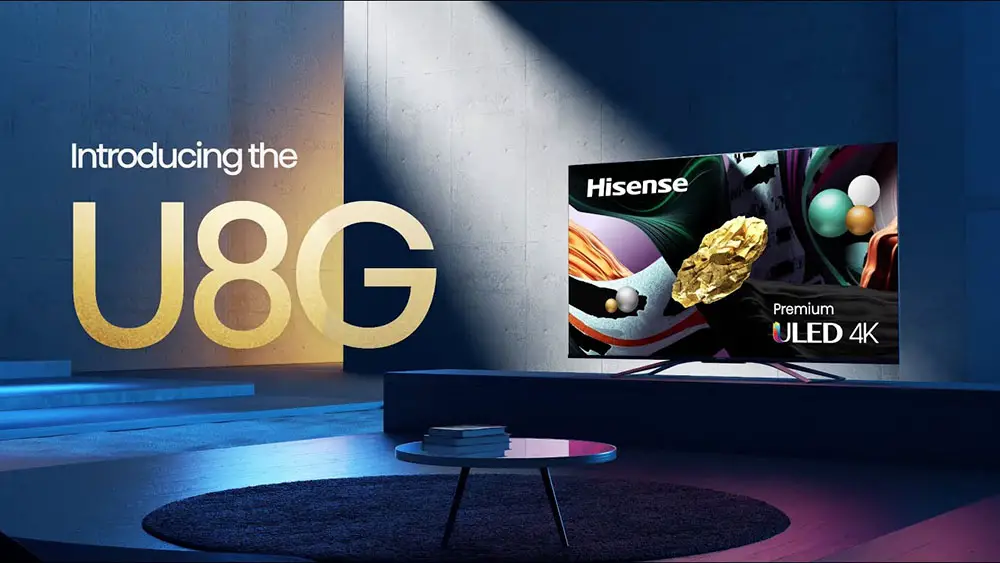
The U7G was a major upgrade compared to the U6G almost across the board as the U6G was mostly a budget friendly offering while the U7G came with many of the latest tech. Now the new U8G takes things even further but this time it seems that the improvements are not so vast and we would say that this one is meant for those that look to get a little bit more out of their purchase than what the U7G would offer. But we will talk about their differences shortly.
Going through the specs very fast the U8G comes with a VA panel that has a 120Hz frequency and features, once again, a FALD backlight system but ups the number of dimming zones available. Dolby Atmos and Dolby Vision along with HDR10+ are present and we also get Dolby Vision IQ along with IMAX Enhanced and DTS support. Other notable additions would obviously be the inclusion of HDMI 2.1, the U8G has two of them, while we find the same Android TV 10.0 as in the U7G and U6G. These are the most notable features this unit comes with.
As you can see from the above the U8G offers a small jump in specs compared to the U7G compared to what the U7G offered in comparison to the U6G. But as always it’s all about the price and the Hisense U8G follows the same Hisense policy as the 65″ size comes right at the $1,000 mark while the 55″ goes as low as $850 which is impressive considering you get a FALD TV with so many bells and whistles. But is it as good as it seems? Let’s find out.
Design
Hisense is creating a lot of confusion with their model numbers across multiple markets and this seems to be also the case with the U8G as the unit with this model number in the US is different from the U8G found in the UK or other European markets. As such someone can easily mistake one for the other. The best way to distinguish them is first to look at the specs as the US U8G has a brightness rating of 1,500 nits while the UK one is at 1,000 while the stand they have is also different.
The U8G we have for testing is the US variant and in terms of design the U8G is extremely similar to the H9G from last year. Being a FALD unit means that its thickness is higher than other models which we measured at 3.8″ (9.5 cm) making it even thicker than the U7G. Its back is more curvy than the other Hisense TVs we tested lately but this shouldn’t be a problem with wall mounting it.
It features metal borders and its bezels are thin enough and on par to other competing units. At the back we find all ports on the right side divided into two groups with one looking sideways and the other backwards. The layout of the ports is exactly the same as what is used in the U7G so no changes in this regard. The power connector is naturally kept separately on the left side while the U8G seems to get back the special groove at the bottom that helps with cable management that was missing from the U7G.
The Hisense U8G is using a bench type stand but its design is unlike anything we had seen before. The legs are made out of metal and look sturdy enough and their triangle design starts almost from the middle of the TV and extends towards the sides. Surely it looks better than the typical bench type stands that are used across many brands and definitely feel more premium. The stand kept the TV stable enough with not much wobble.

The remote that is included with the unit is exactly the same as the one we used in the U7G. It’s a small remote overall and has less buttons which honestly we like more. There is no numerical pad here and the less buttons makes it feel less cluttered as any remote for a smart TV nowadays should be. The dedicated buttons are the same ones with six available for Netflix, Amazon Prime, Youtube, Disney+, tubi and peacock.
The remote is made out of plastic and uses rubber buttons, its feel is in general good and while it is IR based which means it needs line of sight to work it can also be connected through Bluetooth in order to use its microphone and voice commands feature. Overall it is a nice remote even if a bit on the cheap side.
Hisense gives a lot of emphasis on creating low cost products that look much more expensive than they really are and the U8G is another one. The TV may not be the most premium of designs but it looks good and has very good build quality which is great for the price asked.
Video Quality
Processor technology used
In terms of processing there are no surprises as the U8G comes once again with a quad core processor featuring 4K upscaling and noise reduction features but other than that Hisense is very secretive about the kind of processor at hand and there is no information in any promotional material in contrast to almost every other manufacturer.
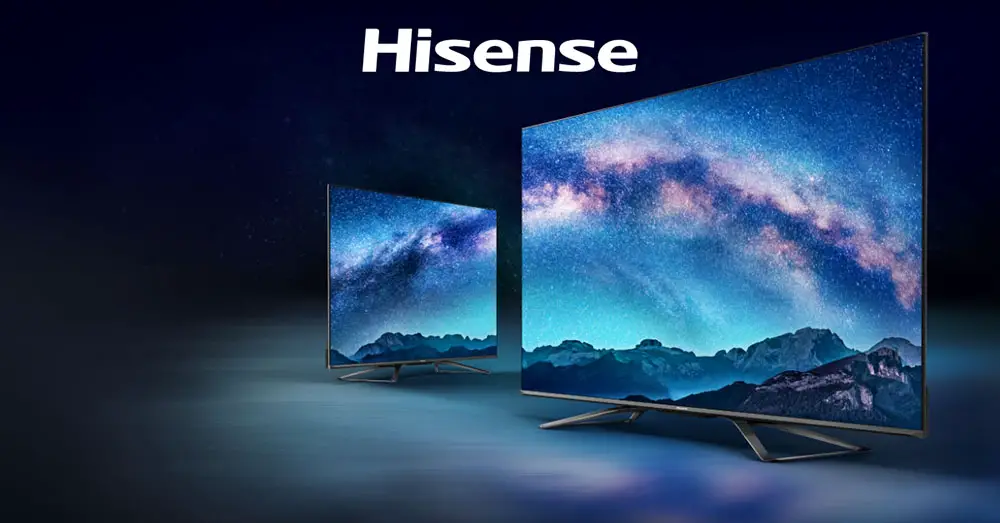
But as nice as promotional material may be, its real world performance is what matters the most and here the U8G really excelled no matter what kind of source material we through at it. We tried videos in low resolution, 720p and 1080p and all upscaled to 4K without any visible artifacts. And if the source material is not very high quality then its noise reduction feature can help for sure, just make sure to use it only when necessary as it can alter the original image.
Lighting technology used
The U8G uses a FALD backlight system which may be better than the low end edge LED ones but has been surpassed this year by the new mini LED ones.
A FALD system in order to perform good depends on two factors, the number of dimming zones available and how fast each zone can change it’s light output. The more dimming zones used the better and more accurate light control the TV has but also the higher the price goes, that’s why they usually scale the dimming zones number depending on the model.
The effect on having low number of dimming zones can be seen when you see a very bright object on a completely dark background. If the TV has very few zones light will escape to the nearby pixels and create a visible halo around the object.
Also the light algorithms play a huge role as they control the response time of the various dimming zones. If the change is slower than it should be you will see what is called ghosting when a bright object moves very fast against a dark background.
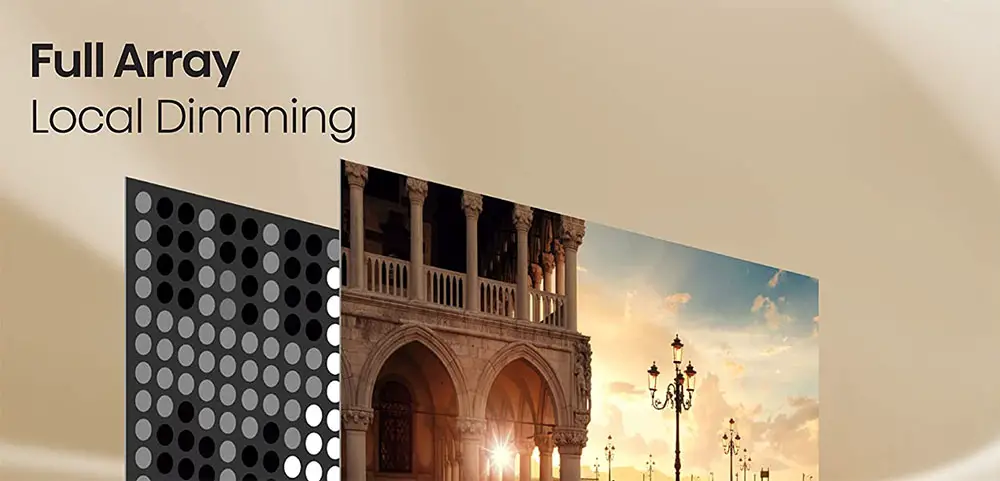
Here we find the first big difference compared to the U7G as the number of zones has increased considerably. While the 55″ of the U7G we tested recently only had 72 dimming zones, in the 55″ size of the U8G we are testing here today we measured 132 zones which is almost double. This surely helps with blooming that was very obvious in both the U6G and U7G. It is not entirely eradicated here as it is still obvious but it is not so much distracting or bothering. With more zones to work with the local dimming functionality of the U8G does a great job at handling the number of zones available.
As for its dimming algorithm we felt that it could do a bit better as when there were very fast moving objects it seemed like it had trouble keeping up making the moving objects to show a bit darker in their leading edge. Most of the times this was hardly noticeable and it was more obvious with some test patterns than with real content but it’s something that is worth mentioning.
Also keep in mind that the 65″ size has even more dimming zones to handle, coming at 360 zones to be exact, which is almost three times the number of zones of the 55″ size. This means that the 65″ probably has even more accurate light output and better local dimming overall but we are not able to confirm that ourselves.
Brightness / Contrast
Hisense is one of the few companies that is adding theoretical peak brightness numbers into their marketing campaign. In both the U6G and U7G we got very good measurements and seeing the U8G coming with a 1,500 nits rating it will be interesting to see how this unit can perform in this regard.
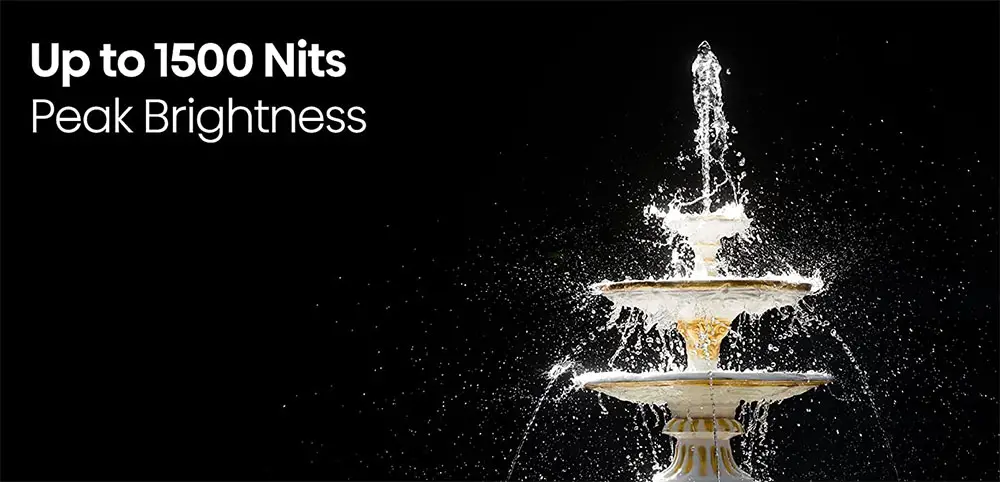
Firstly we measured the SDR brightness over a 10% window and the number we got was 1,307 nits and while this number is not exactly what Hisense mentions it still still extremely good no matter how you see it. SDR content does not have high brightness requirements to begin with so what the U8G can output is extraordinary.
When it comes to HDR brightness over a 10% brightness we measured 1,585 nits which even exceeds Hisense’s theoretical brightness rating of 1,500 nits. The U8G is definitely a very bright TV with highlights being very impressive with their intensity.
For our testing we used, as always for parity reasons, max local dimming and backlight settings. As it was with the U7G, the U8G seems to be one of the brightest TVs in its respective price range. Being able to hit 1,500 nits and keeping a price of $1,000 or even less for the smaller 55″ size is an amazing feat. But one thing that we noticed is while the TV does get very bright it was not very accurate. By this we mean that the TV displays HDR more bright than it should in most cases so while it may look dazzling it certainly is not as it should.
The TV uses a VA panel and as a result contrast was very good and on par to what we observed in the U7G. When you enable local dimming things improve even further but not by much and the difference is not so noticeable as in other TVs. This is a very similar behavior to other Hisense units.
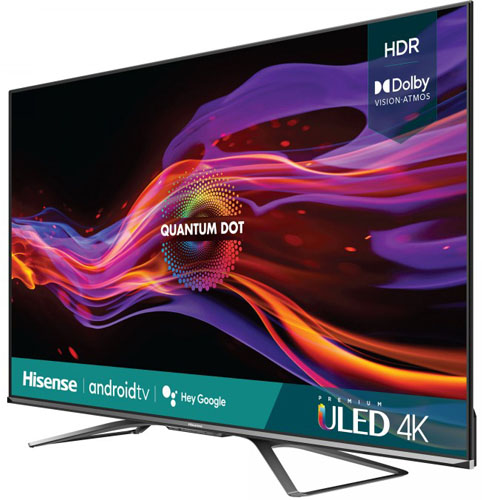
Viewing angles
Using a VA panel meant that the U8G would suffer a lot in terms of viewing angles. VA panels in general have trouble with this so it’s not a problem of the U8G in particular. Some manufacturers tend to use extra layers in order to improve upon this but the U8G doesn’t seem to be using any similar technology which is the same as we saw in the U6G and U7G recently.
As such the best angle we could get out of this one was about 25 to 30 degrees at maximum. Anything more and the image quality takes a dive pretty quickly. As such the U8G is not ideal for family use where many members will be watching at the same time from different spots. But since what is acceptable image quality is very much a personal thing we would suggest you to try it out in a local store in order to be sure if you like it or not.
The U8G performed slightly worse than the U7G but the differences were small and in general the U8G behaved in the same way as many VA equipped TVs. What was notably different with the U8G was its reflections handling as the TV fared much better than its cheaper brothers. Although most Hisense TVs use a semi-gloss screen finish the one used in the U8G was much better at lowering reflections, making it the better choice for a bright room.
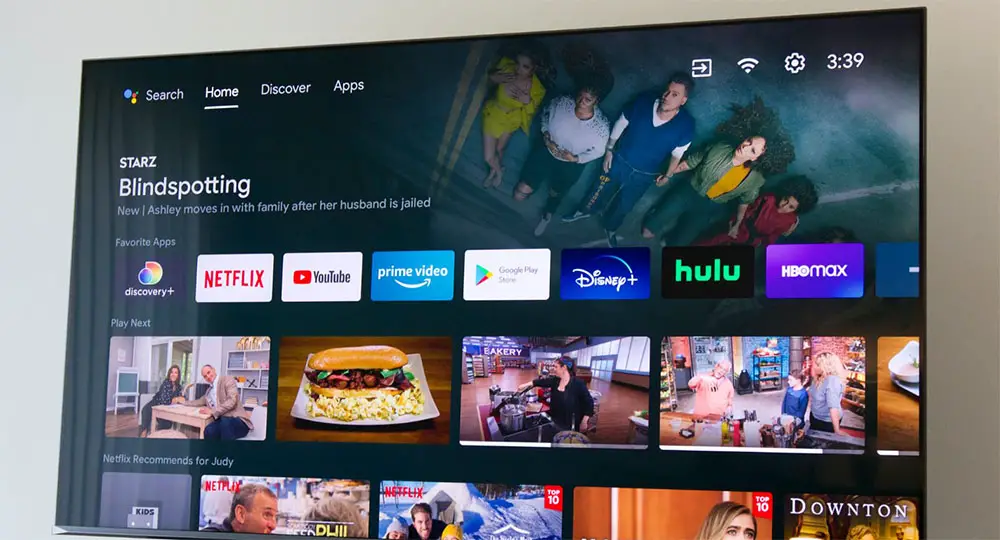
HDR support
With the current HDR war you really have to choose which camp you want to follow as not many brands support all available HDR protocols. It’s either Samsung’s HDR10+ or Dolby Vision that Sony and LG support which is really a shame as we don’t get the chance to choose all of them at any time. Thankfully Hisense is one of the few brands that are not supporting any specific camp and instead went ahead and added everything in their releases.
As such no surprises for the U8G as it supports not only the basic HDR10 but also HLG which is used for streaming content and both HDR10+ and Dolby Vision which use dynamic metadata for a much better image quality outcome. This is a huge one in our books. Not being bothered to choose between a specific HDR protocol surely opens up much more high quality content. And while HDR10+ content is still not as widely available as Dolby Vision is, we are seeing more and more content releasing lately. And with Samsung’s support, be certain that even more will come in the future.
Additionally the U8G comes with Dolby Vision IQ. This basically uses an external light sensor on the body of the TV and can automatically adjust the Dolby Vision dynamic tone mapping according to the ambient light in the room and also according to the material that is displayed on screen at each moment. Obviously this can be turned off if you don’t want the TV to go ahead with such processing that can really change the final outcome of the image.
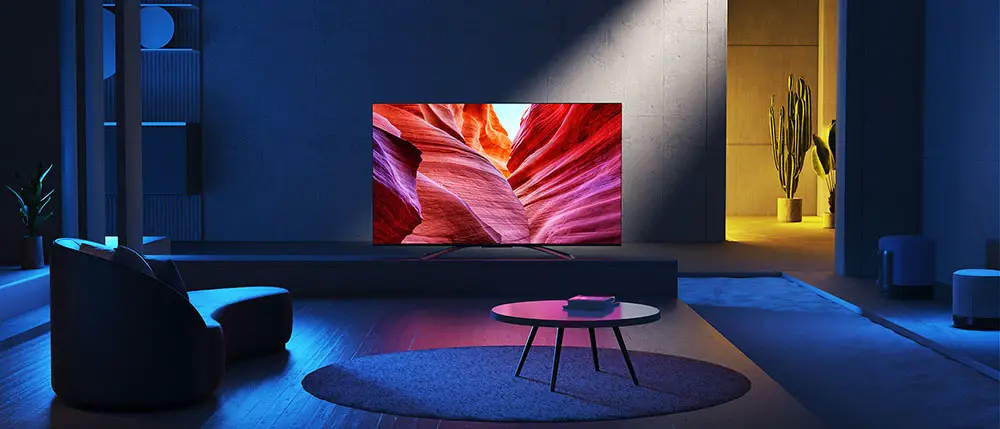
One thing to note here is that by using Dolby Vision IQ the Motion Enhancement feature turns on also and there is no way to change it meaning that some level of motion smoothing you will have to accept. Unfortunately right now there is no way of keeping Dolby Vision IQ without motion interpolation which many will surely dislike.
Color coverage
Next comes the color performance as the U8G supports wide color gamut for more vivid colors and lifelike shades. This is possible as the TV comes with Quantum Dot technology which is an extra layer on the panel that many high end TVs are using in order to increase the number of colors that can be displayed on screen. Basically the TV is a QLED but Hisense is naturally using their own branding by calling their TVs ULED.
Now, according to our measurements the U8G covers about 97% of the DCI-P3 color space which is great considering its cost. On the wider REC.2020 color space we measured 76% coverage which is very good also. From our measurements we can say that the U8G is a good upgrade over what we got in our U7G review although with naked eyes the difference may not be so obvious.
In terms of gradients the U8G seemed to have a few problems with most shades and mostly towards the darker color tones. In general we have noticed that Hisense TVs are struggling in this area compared to other competing brands and surely it’s an area where Hisense should improve in the future.

Motion performance
The U8G seems to come with all the same motion features we saw in the U7G so more or less we were expecting to get similar performance out of it. The TV is using a 120Hz panel and as usual the TV is utilizing Pulse Width Modulation with a very high frequency (960 Hz).
There is also the usual Motion Interpolation feature that can smooth motion and remove blur and judder from fast camera movements. Motion interpolation did show the same weaknesses we saw in the other Hisense TVs. It was good enough for most slow paced scenes but when there were fast camera movements a lot of artifacts became visible. As usual, using very aggressive settings will make the familiar “Soap Opera Effect” to appear so keep this in mind when you are adjusting its settings.
We also get Black Frame Insertion (BFI) which basically is a motion interpolation technique that inserts a black frame between every two individual frames and this can really create much smoother motion. But while the end result is pretty good there are some downsides to this with the most obvious being the lower brightness being displayed due to the black frames. We did notice some duplicate images when displaying 60Hz content and definitely its implementation is not as good as we have seen in some other brands.
The U7G does support FreeSync VRR so if you have devices that support this like an Xbox console then you will greatly benefit from this gaming feature. It seems that the U8G also supports G-Sync although this is not officially mentioned anywhere but from our tests it seems that it does.
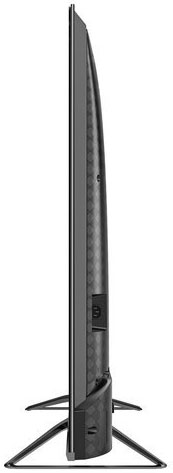
Overall we didn’t see any major changes here compared to the U7G. We noticed all the same weaknesses and this is one area where Hisense needs some work in order to be on par with the other brands. We wouldn’t say it was bad but there is room for a lot of improvement.
Input lag
Since the U8G is very similar in terms of hardware we were not expecting to see any major differences between the U8G and the U7G in the input lag area either. And this was indeed the case as according to our measurements the TV is capable of a 15.3ms input lag that was an average we got between the 1080p and 4K resolutions at 60Hz. This may not be the lowest number we have seen in general but it is definitely low enough even for the most serious of gamers.
Outside of game mode we measured 123.9ms on average at 1080p@60Hz and 4K@60Hz which is still acceptable for casual or slow paced games. The numbers above are extremely close to what we had seen in our U7G review and shows that nothing has changed in terms of processing between the two models.
We should also not forget to mention that the TV supports Auto Low Latency Mode (ALLM) that can be used with any devices that support that like the PS5 and Xbox consoles and can greatly benefit users. Unfortunately once again there is no HGiG mode available here.
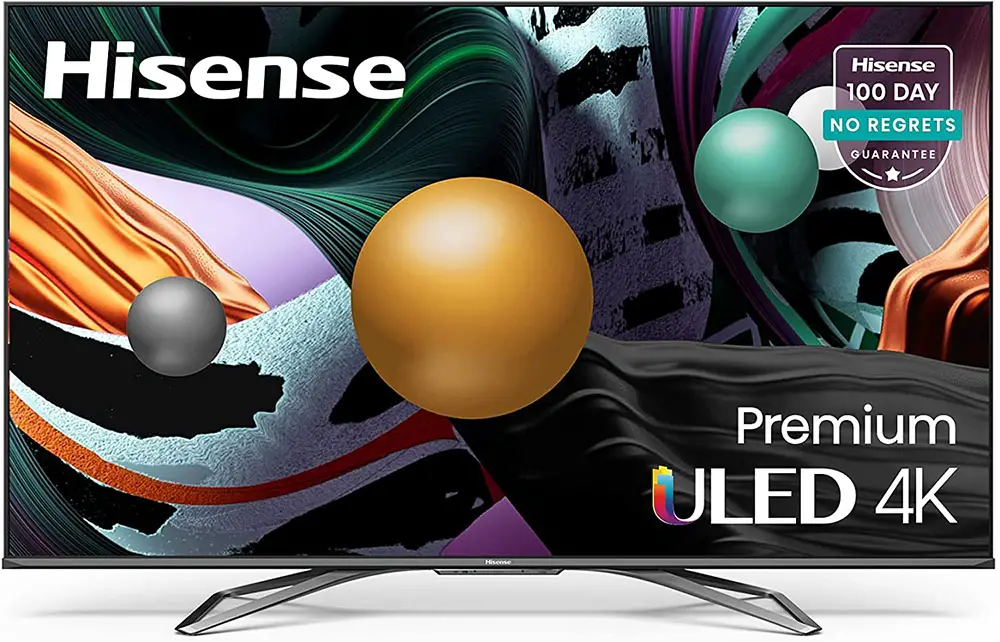
Before moving on we connected our PS5 console to the U8G and tried some F1 2021 action. As it was the case with the U7G, the U8G offered an amazing gaming experience. Fast response time, low latency and instant rendering of all our commands makes a great quality gaming TV as the U8G ticks all the right boxes.
Image quality impressions
The U8G is a smaller upgrade over the U7G than what the U7G was over the U6G but the extra $100 in price does allow for some further improvements making the U8G a very solid performer. 4K upscaling was stellar, color reproduction was great, brightness in both SDR and HDR was dazzling, contrast was good enough while its low input lag and new gaming features makes this TV a really great choice in this price.
We were a bit disappointed to see all the same problems with motion which is definitely one area where Hisense can improve a lot. Using a VA panel also means that viewing angles are mediocre at best while blooming was still visible even with the increase of the dimming zones available here. Also with fast moving bright objects the dimming algorithm had trouble as it was not fast enough making the bright object show a darker leading edge sometimes.
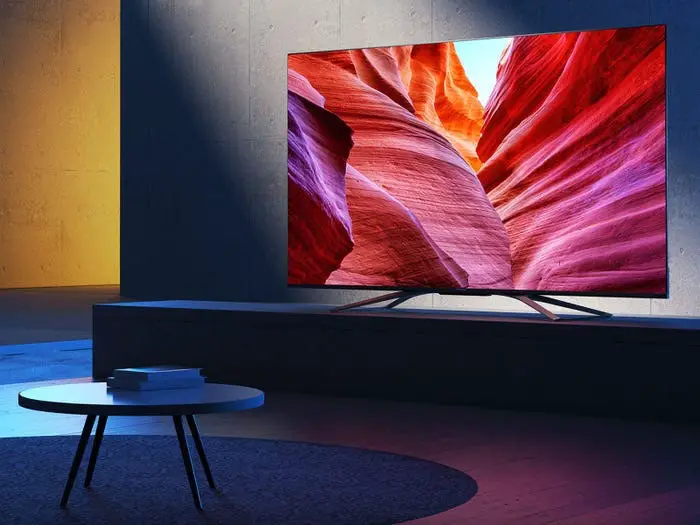
Audio Quality
Next in line is sound performance and from what we see the U8G features a pretty standard 2.0 channels audio system with a total of 20 watts of power (2 x 10 watts) which is the normal for this category. The included system is adequate for casual viewing but in general it cannot offer anywhere near the kind of immersion of a surround system. The TV features exactly the same hardware and settings as the other Hisense TVs we had tested so no surprises here either.
There are a few sound modes to choose from but that doesn’t change much in terms of the actual sound signature. You also have the ability to output either from the TV speakers, through the eARC connection or even to some Bluetooth enabled speakers. At least with the inclusion of eARC the U8G can pass-through not only Dolby Atmos but also DTS:X to an external device like a soundbar or AV receiver.
The U8G supports not only Dolby Atmos but also DTS and IMAX Enhanced which not many brands do. Although with a 2.0 channels system you should not expect much in terms of what the TV itself can do at least these are available for those interested.
The TV can go really loud and offers very clear dialogue but as with any 2.0 channels system there is not much in terms of immersion. The audio system can do well in casual viewing or watching sports and broadcast material but for anything more you need a capable audio system.
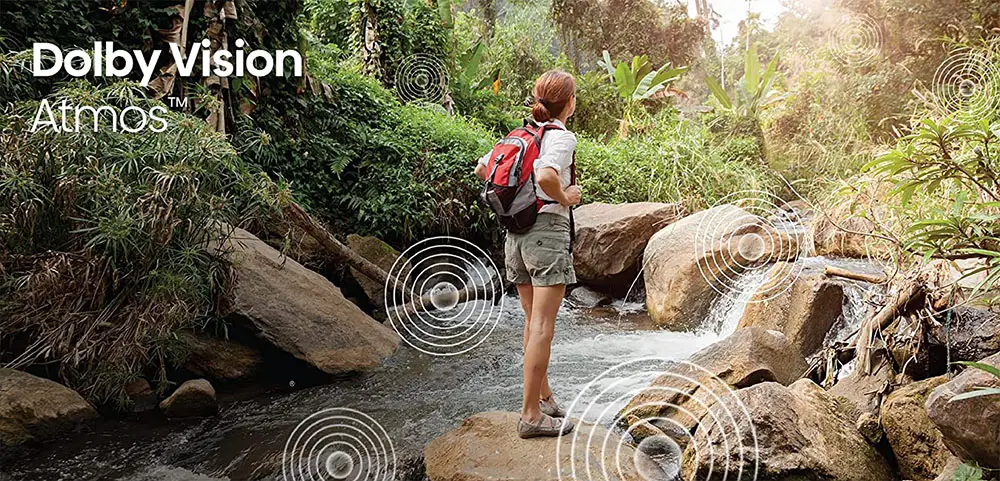
Nothing out of the ordinary here in terms of actual performance. What is more important is the inclusion of an eARC port and with support for Dolby Atmos, DTS and IMAX Enhanced ensures that you can pass almost all kinds of audio to any device you may have that performs better than the TV itself.
Ports and Connectivity
As we mentioned above the U8G comes with two sets of ports located at right side of the back panel and upon first inspection it seems that the layout here is exactly the same as the one used in the U7G. Those looking sideways include four HDMI ports, two USB ports, an audio/video input that needs a special adapter to be used, a headphones jack and the antenna/cable connector. At the other group we find an Ethernet connector, a digital audio output, a serial port and a service port.
The U8G comes with two HDMI 2.1 ports which means it can support up to 4K@120Hz. The other two ports are the older HDMI 2.0 and so they can support up to 4K@60Hz signals. One of the HDMI 2.1 ports is also coming with eARC which is a step up from the ARC found in the U6G. This means that the U8G can pass-through not only Dolby Atmos but also DTS:X to another audio device like a soundbar. Keep in mind that Hisense is one of the few manufacturers left that still support the DTS format.
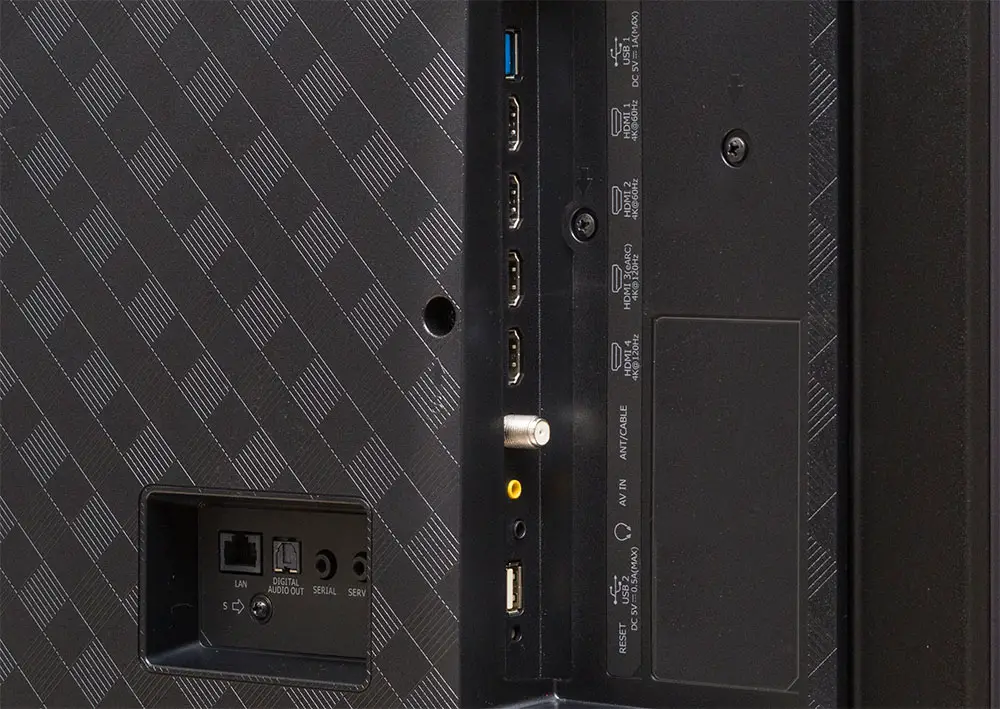
There is also a USB 3.0 alongside the USB 2.0 which is a plus if you have big files with high bitrates while in terms of wireless capabilities the U8G comes with built-in WiFi (802.11ac) along with Bluetooth but once again Hisense doesn’t mention which version they have included.
The U8G doesn’t offer anything different here compared to the U7G and to be honest it’s hard to add anything else. Having only two HDMI 2.1 ports and with one being for eARC also may mean trouble for those that want to connect multiple HDMI 2.1 devices, but this is a problem many manufacturers face including Sony, Panasonic and Philips. Only LG seems to have the edge in this so far.
OS, Apps and Features
Hisense has been using the Android TV platform for their TVs but unlike Sony that switched to the Google TV interface, Hisense decided to use the standard Android TV platform once again. And in 2021 we have reached Android TV 10.0 which is not all that different from last year’s edition in terms of usage and UI presentation. As far as we have seen all Hisense TVs come with the same set of extras and smart features as they all use the same Android TV OS so this part of our review is similar to our observations on the other Hisense models.
Unlike previous versions of webOS and Tizen, the Android TV platform takes the whole screen when you enter its home screen and you get various selections on the top and left of the screen. Customization is also possible in certain parts of the layout that could help you organize various tiles and icons to your preference.
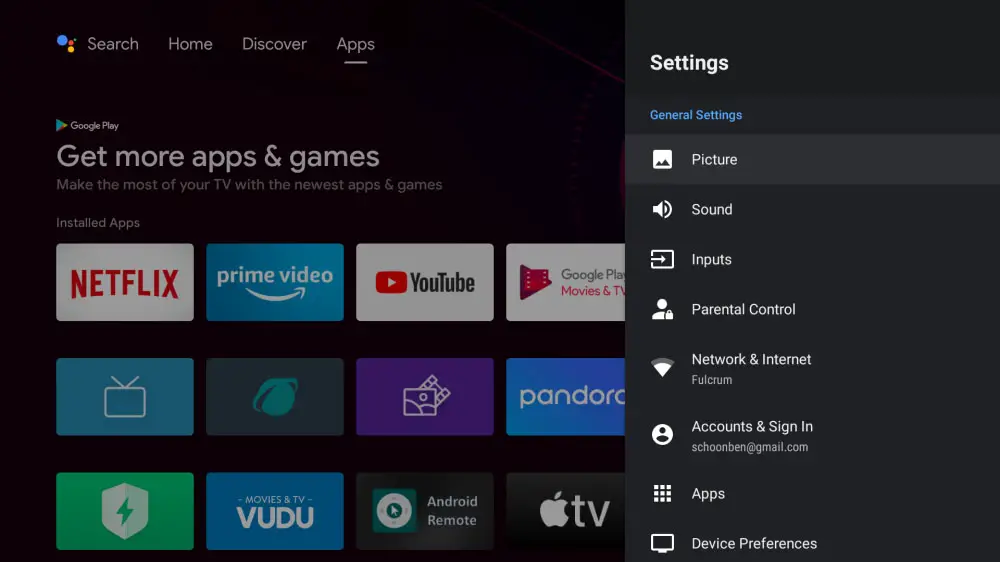
With the latest Android TV 10.0 version we had once again a very smooth and lag free experience across all its menus and UI settings. The U8G was fast enough, apps could be opened and closed without any frustrating delays and navigation was smooth and without any noticeable bugs.
If there is one thing that Android has in abundance that is definitely the huge support from developers. Through the included Google Play you can find literally thousands of apps that you can download and use except from the pre-installed ones. There is so much content available that you will definitely find the ones you are looking for and the list goes on and on.
Some of the most prominent names are all accounted for including Google Play TV & Movies, Disney+, Netflix, Amazon Video, Sling TV, Hulu and Youtube as well as Pandora, Tidal, Google Play Music, Spotify or iHeartRadio. As always some of them are region dependent so make sure the ones you are interested in are working in your area.
Chromecast is also available here and it gives you the ability to stream content from other Chromecast enabled devices like mobile phones and tablets directly to the TV. Voice control is also present but it seems that it is a bit limited compared to other competing models. By that we mean that although you can use the remote’s built-in microphone to give commands to Google Assistant for Amazon Alexa you will need an external Alexa enabled device to work.
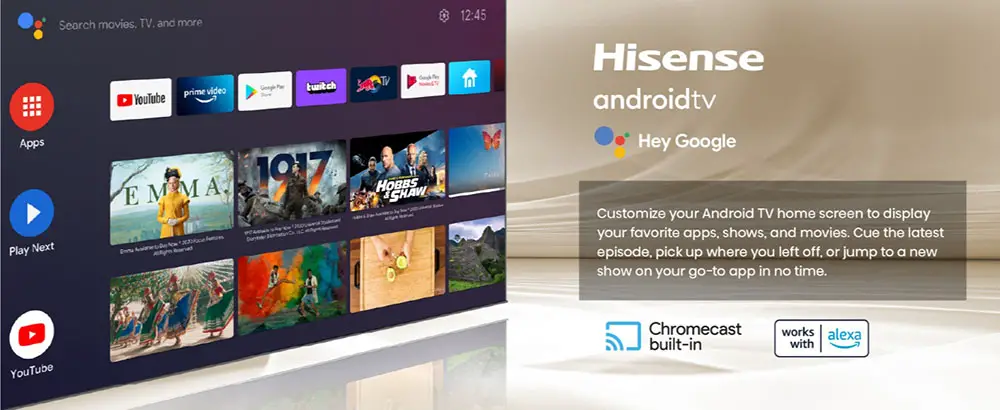
We have seen the same thing in some other Sony TVs that were using Android TV also and probably has to do with the fact that it’s using Google’s Android system and thus having Alexa built-in was not possible. With voice control you can issue various commands to the TV but functionality extends far beyond that as you can control any smart devices you have in your house also.
The U8G has another microphone built-in into the main body and thus you can use voice control without the need to use the remote. This way you can have a complete hands free experience that was not possible in the U6G but was present in the U7G. Also in case you don’t want this microphone to be active all the time Hisense has added a switch that you can turn off. In this case you can use the remote’s microphone only whenever you want to.
There is also a built-in media player available that you can use to playback various video and audio content from an external storage connected to the USB ports. The one in the U8G behaved very similar to the one we tested in the U7G and as least from the test files we used we didn’t notice anything different. The player in the U8G can support many different types like MPEG, MP4, MKV, AVI, FLV and WEBM and all these containers can be used with different codecs thus giving the TV great flexibility.
Most of the files we tried out played just fine with only a couple of them having a few problems with glitches and these were mostly some very high bandwidth files that are not very often to find. For casual use the built-in player will just fine but if you stream a lot of files then definitely a dedicated media hub can fare better.
We didn’t notice any differences or additions in the U8G compared to the cheaper models. The Android TV experience was stellar, there is a lot of support and all the most important features are accounted for making the U8G an excellent smart TV offering.
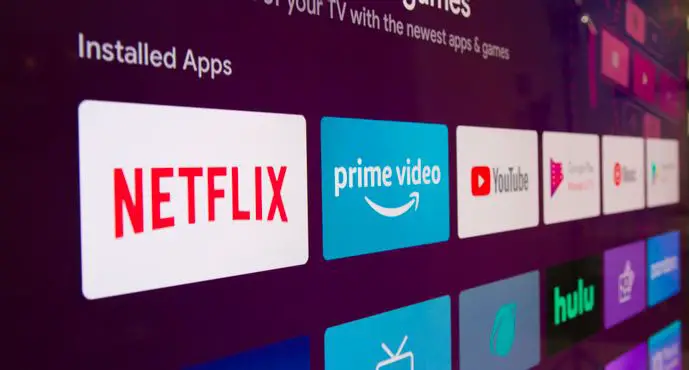
Final Thoughts
Looking at the prices it is easy to understand why the U8G is not such a huge improvement over the U7G. Hisense wanted to keep the price as low as possible and close to the $1,000 mark so there was no room for bigger additions or improvements. The U8G seems like a beefed up U7G and this is surely a good thing as the U7G was already a very stellar release.
Its strong points include great upscaling capabilities, great colors, excellent brightness in both SDR and HDR, solid contrast and low input lag. Add to these the new gaming features that come with the new HDMI 2.1 ports, support for all HDR protocols including HDR10+ and Dolby Vision, the inclusion of not only Dolby Atmos but also DTS with DTS:X pass-through and IMAX Enhanced along with a very stellar Android TV platform and it will be hard to find another TV with similar specs at this price.
On the downsides the most obvious are the visible blooming, the slow response of the dimming algorithm, the bad viewing angles and the less than stellar motion performance. Also the TV was not very accurate with its brightness as many scenes would appear brighter than they should. Lastly the inclusion of only two HDMI 2.1 with the one being the eARC also can mean trouble if you have multiple HDMI 2.1 sources.
The U8G is in a really tough position and mostly because of the competition within. The U7G was already a very stellar release and with Hisense’s low price policy there was not much room for improvement for the U8G. But for $100 more you get some decent upgrades with all of them focused around its brightness and image quality. If it would improve on its motion we would consider this a blind buy but even as it is the Hisense U8G is an excellent TV for mixed use and there is hardly anything else similar out there with the same price tag.
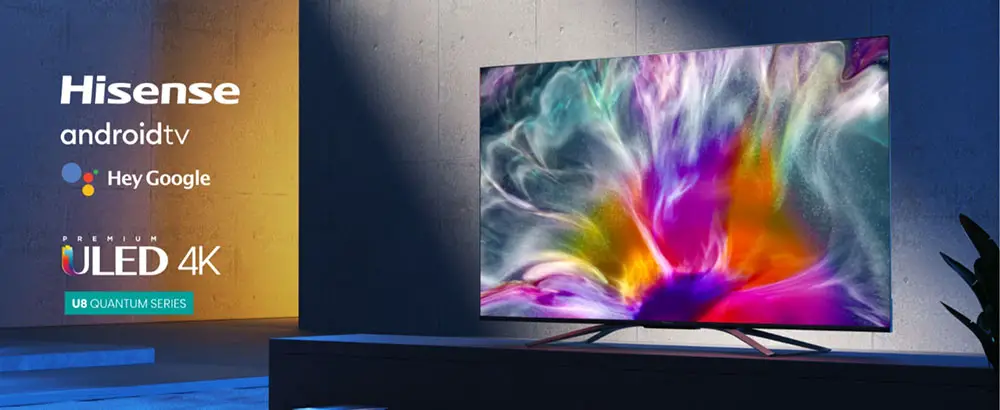
For more reviews you can check our dedicated 4K LED LCD TV reviews list or even look at our Product Reviews Table where you can find the brand and specific product you are looking for.
Cheapest Places to Buy :
*We are a reader-supported website. When you buy through links on our site, we may earn a small affiliate commission at no extra cost to you. Home Media Entertainment does not accept money for reviews.*
I was torn between the U7G and the U8G for a couple of months now but thankfully you made it very clear what their differences are. I think I will go for the U8G in the end. The difference in price is not so much and since it has better image quality overall why not. Thanks for your detailed review.
You are welcome Brooke. Let me know if I can do anything else for you.
My tv is quite old and I have been looking to replace it with a new one so this article came at the perfect time. I have never really been a fan of Hisense though, I always had TVs from the big three. Tell me, is it really that good or should I go look for another brand? I do not want to purchase something that will give me problems in the long run.
Hello Daniel. There is no reason why not to buy a Hisense TV although I cannot say about their customer service as in each country this may differ. But as far as the TV itself the Hisense is hard to beat in terms of performance versus price and it is really worth it.
I just recently came across your review and it is by far one of most
detailed ones out there. Recently purchased a U8G (30 days) and putting
it through its paces. While the picture really ‘pops’ if your sitting straight
on, I’ve noticed degradation when being off axis. I also occasionally experience
color banding and in low light situations artifacts/tiling .
Keep up the good work!
John
Hello John, and thank you for your kind words. We always try to provide as much details on the products we review as possible without becoming extremely technical that can be hard to read for many.
And also thank you for your input on the U8G. It means a lot to us to read your input on it. The TV surely has certain limitations but overall I would say it is more a hit than a miss for Hisense. And with its low price it surely has a place in the market.